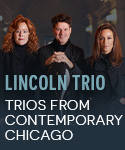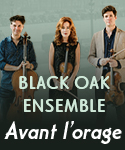If you had happened into La Scala some time in 1992 and encountered this performance of Donizetti’s Lucia, you would have left the opera house truly satisfied. The handsome, obviously expensive sets by Pier ‘Alli (who also directed and is responsible for the good-looking costumes) are atmospheric, with the first-act fountain scene open and beautifully lit, the Ravenswood graveyard suitably full of character, and the columned hall of Lammermoor castle, with its ruined walls, implying just what it should–decrepit grandeur. The lead singers are well-known in the opera world, and they shine in their roles: Mariella Devia is a true bel canto soprano, with secure and plentiful high notes, easy coloratura, and a smooth legato; Vincenzo La Scola may not cut the most dashing figure or have either the most lovely or meaty of sounds, but he’s quite good; Renato Bruson, a bit long-in-the-tooth, is an elegant and dangerous Enrico; and Carlo Colombara is no more boring than anyone else is in the role of Raimondo.
The singers give us interpolated high notes wherever we like them, and except for a close-to-unforgivable bit of sloppy ensemble work at the start of the all-important sextet, the musical preparation under Maestro Stefano Ranzani is very fine. The Raimondo/Lucia scene and Wolf’s Crag Scene have been restored, as has Enrico’s entrance and musical interchange after the Mad Scene cadenza, so you get Lucia more or less as Donizetti wrote it, although the second verse of Enrico’s first-act cabaletta is cut, probably to make life easier for Bruson.
But watching and listening at home, with a type of scrutiny impossible in the opera house, you’ll note the following: the chorus-members look dead and walk like automatons, never changing their seemingly bored expressions; similarly, there’s not a movement or gesture from any of the soloists that you haven’t seen hundreds of times–they are stock, hand-to-heart gestures –and this includes the sensationally sung Mad Scene. Devia runs left, Devia runs right; Devia falls down, Devia gets up; Devia opens her arms as if to implore, Devia folds her arms over her chest, crestfallen. Meanwhile, the chorus, in shadow on either side of the stage, mutters and doesn’t move a muscle.
And the singing? Vincenzo La Scola’s tone is not ingratiating; rather, he is a “useful” tenor. And Devia, whose singing is absolutely perfect, with dead-center pitch, endless breath, and fine phrasing, has a tone that never varies from bright. Okay, I’m nit-picking, but if something is going to be immortalized for home viewing, shouldn’t it be special? As it stands, this is a good-looking, traditional, well sung–and in the case of Devia, amazingly well sung–Lucia; but it is not memorable. Sutherland, Sills, Scotto, and Callas need not fear. On the technical side: picture and sound are spotless, camera work is varied and interesting; a synopsis and Italian libretto are included, and there are English subtitles, but no extras and not enough chapters.
































